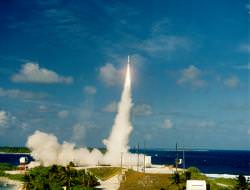Even before man had managed to take to the skies on our planet, he had thought of spaceflight and soaring through the skies of the planets that he could see. As soon as the Montgolfier brothers had successfully launched their first hot air balloon a race began to see who could fly untethered, then into space. That race for spaceflight never let up. Yuri Gagarin and the Soviet space program arrived first, but the Americans were close behind and were committed to one-up-manship.
Tackling all of the spaceflight articles on the internet would take a dozen researchers a lifetime. Of course, you do not have that kind of time or patience, so we have assembled links to all of the articles that we have here on Universe Today related to the topic. We do not expect you to just dive in blind, so here are a few fun facts about spaceflight.
The average space suit costs a little over $12 million(U.S.). Not bad for an outfit that can protect you from a meteorite.
There are 13,000 detectable pieces of space junk…left over pieces and parts from space repairs, broken down satellites, etc. Where ever man goes, garbage seems to accumulate. Some of this junk managed to destroy at least one satellite.
We are on the cusp of full blown space tourism. The ultrarich have been buying trips on space shuttle missions for years, but there are at least two companies that have tested commercial spacecraft.
Many of today’s modern rockets are a variation of the German V2 rocket.
There are hundreds of interesting facts about spaceflight in the links below. Everything from space food to space tourism and the different mission launched by various space agencies. Hopefully, you will find everything that you need and, as always, enjoy your research.
- Adaptive Optics (AO)
- Air-Launch
- Atmospheric Interference
- Ballistic Capture
- Ballistic Trajectory
- Benefits of Space Exploration
- Bio-mimicry and Space Exploration
- Can We Own Space?
- Clarke Belt
- Cosmic Expansion
- CubeSats
- Decadal Survey
- Deep Space
- Deep Space Network
- Drake Equation
- Earth Observation
- Electric Sail
- Electromagnetic Spectrum
- Extrasolar Planets
- Fast Radio Bursts
- Fermi Paradox
- Fusion Power
- Galactic Collision
- Golden Records (Voyager)
- Gravitational Lensing
- Gravitational Waves
- Hibernation
- How High is Space?
- Inflatable Habitats
- Interferometry
- Interplanetary Transport Network
- Interstellar Travel
- Ion Engine
- Launch Facilities
- Launch Failures
- Lithopanspermia
- Lunar Gateway
- Lunar Exploration
- Low Earth Orbit
- Overview Effect
- “Mars Curse“
- Moon Mining
- Nuclear Propulsion
- Orbital Refueling
- Panspermia
- Pioneer Anamoly
- Pioneer Plaques
- Radar
- Radar, Lidar, and Sonar
- Reusable Rockets
- Rockets
- Rockoons
- Satellites
- Satellite Internet
- Search for Extraterrestrial Intelligence (SETI)
- See My House From Space
- Shouldn’t We Fix Earth First?
- Single-Stage to Orbit (SSTO) Rockets
- Solar Electric Propulsion (SEP)
- Solar Sail
- Space Elevator
- Space Junk
- Space Madness
- Space Radiation
- Space Telescope
- Space Tourism
- Spaceline
- Spaceports
- Supermassive Black Hole Merger
- Terraforming
- Weather Satellites
- WOW! Signal


